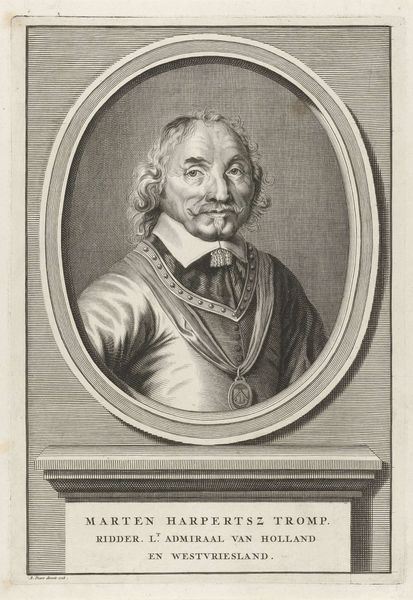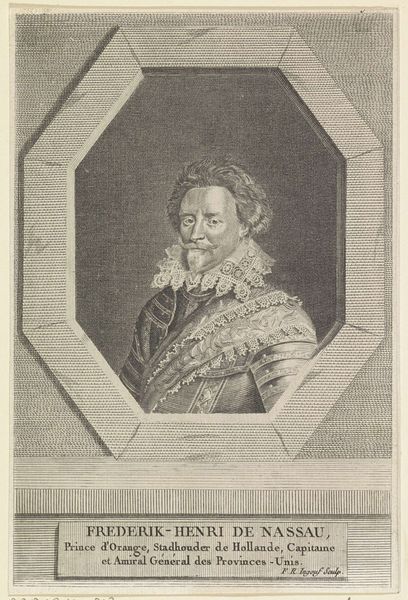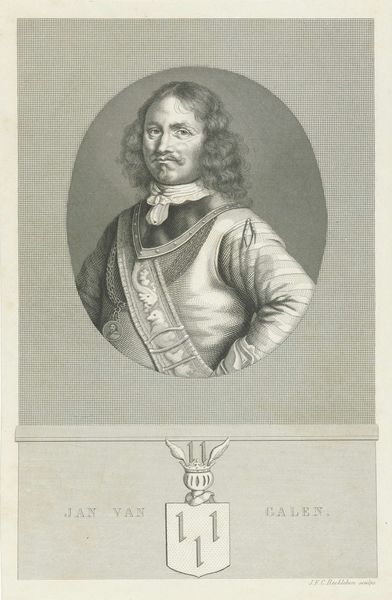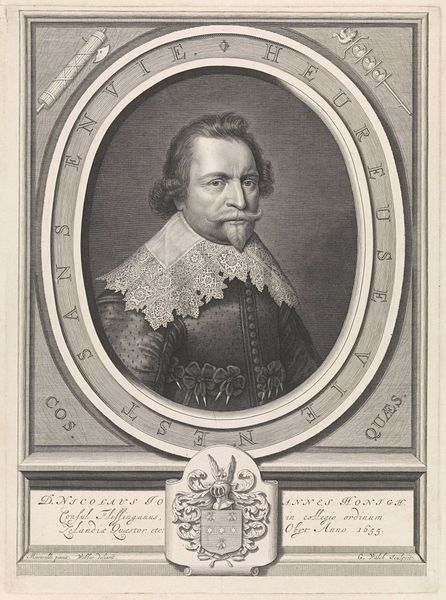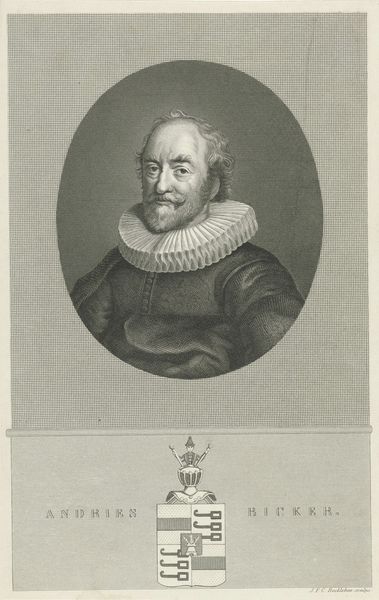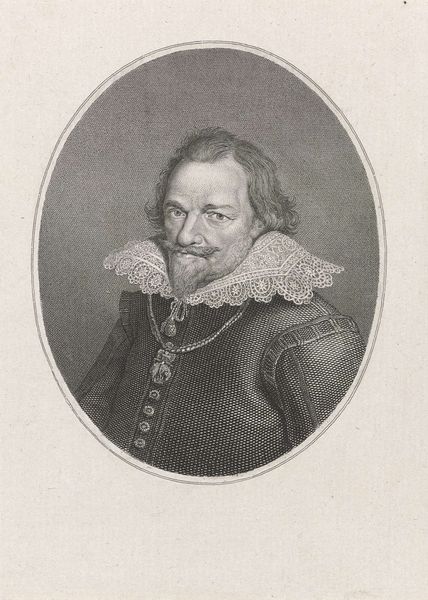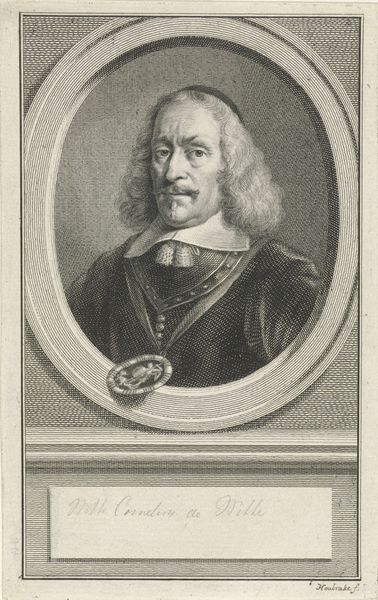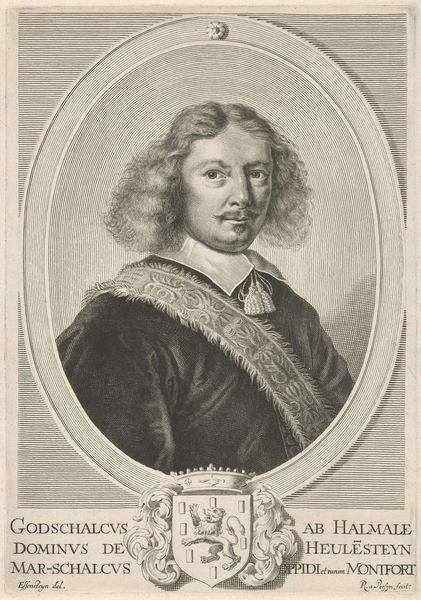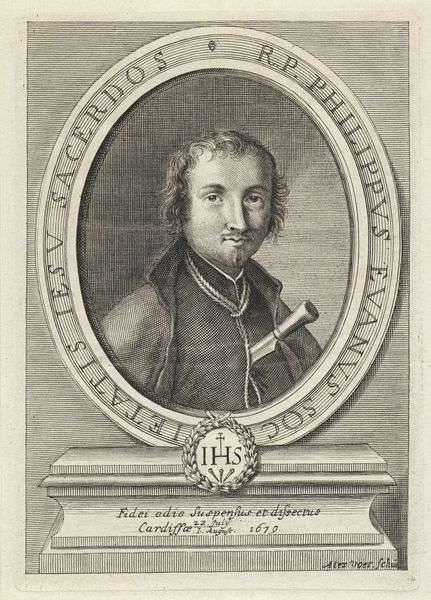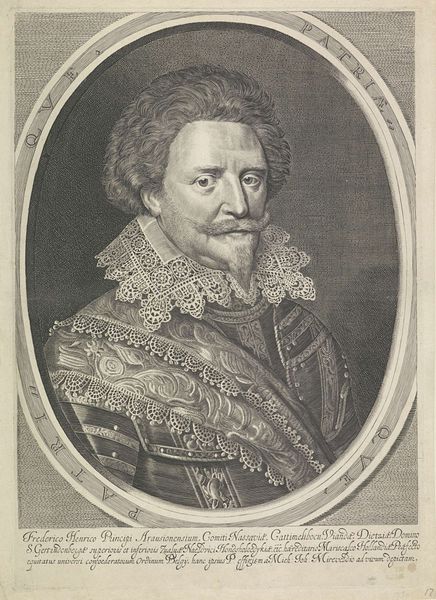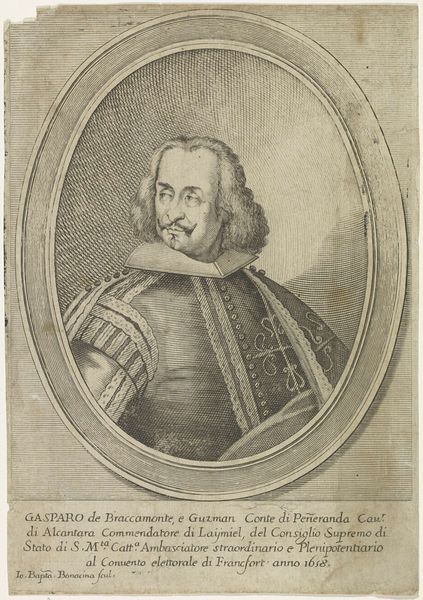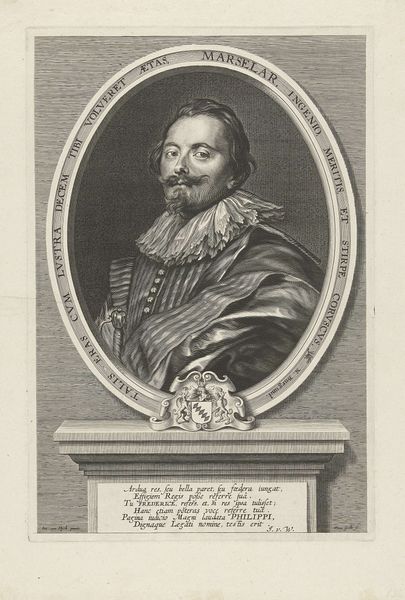
etching, engraving
#
portrait
#
dutch-golden-age
#
etching
#
archive photography
#
historical photography
#
engraving
Dimensions: height 228 mm, width 143 mm
Copyright: Rijks Museum: Open Domain
Curator: Here we have a later etching and engraving after a Dutch Golden Age portrait, made between 1861 and 1863 by Jan Frederik Christiaan Reckleben. It depicts Maerten Harpertsz Tromp, a famous Dutch admiral. Editor: He certainly has the air of command. The detail is striking for an engraving; there's almost a photographic quality. Though something about it feels… staged. A bit too stiff perhaps? Curator: It’s important to remember the role such images played in shaping national identity in the 19th century. The etching served to popularize existing oil paintings. Tromp, already a celebrated military figure from the 17th century, was being recast here within a new Dutch national narrative. Editor: Right, so this isn't just a portrait, but a conscious effort to solidify a certain heroic image. The naval victory symbolism in his family's crest is hard to miss: the ship in the lower part of the shield certainly makes his achievements at sea explicit. And is that a medal around his neck? It’s interesting to think about how this imagery reinforced ideas about Dutch maritime power. Curator: Precisely. These engravings made heroes like Tromp accessible. Copies were distributed widely, adorning homes and public spaces, helping create a sense of shared history and national pride. And, indeed, that's a commander’s cross that hangs from his neck. It symbolizes military accomplishments. Editor: I can't help but wonder about the intended audience for this piece, and what socio-political needs it aimed to fulfill. Considering it was created in the latter half of the 19th Century, one would question the values the artist promoted or resisted and if it affected Reckleben's own sense of identity. Curator: That's an astute point. The choice to represent Tromp in this specific manner inevitably reflects the artist’s worldview and is inextricably linked to the social fabric of the time. It demonstrates a national inclination toward particular values—patriotism and respect for its past heroes. Editor: Looking closer, I find myself both drawn in by the detail and slightly repelled by the romanticization of power. Curator: Ultimately, this portrait functions as both art and a carefully constructed piece of national propaganda. Editor: Exactly. That gives me a lot to think about, given the social issues we currently grapple with in a hyper-connected and equally hyper-mediated world.
Comments
No comments
Be the first to comment and join the conversation on the ultimate creative platform.
